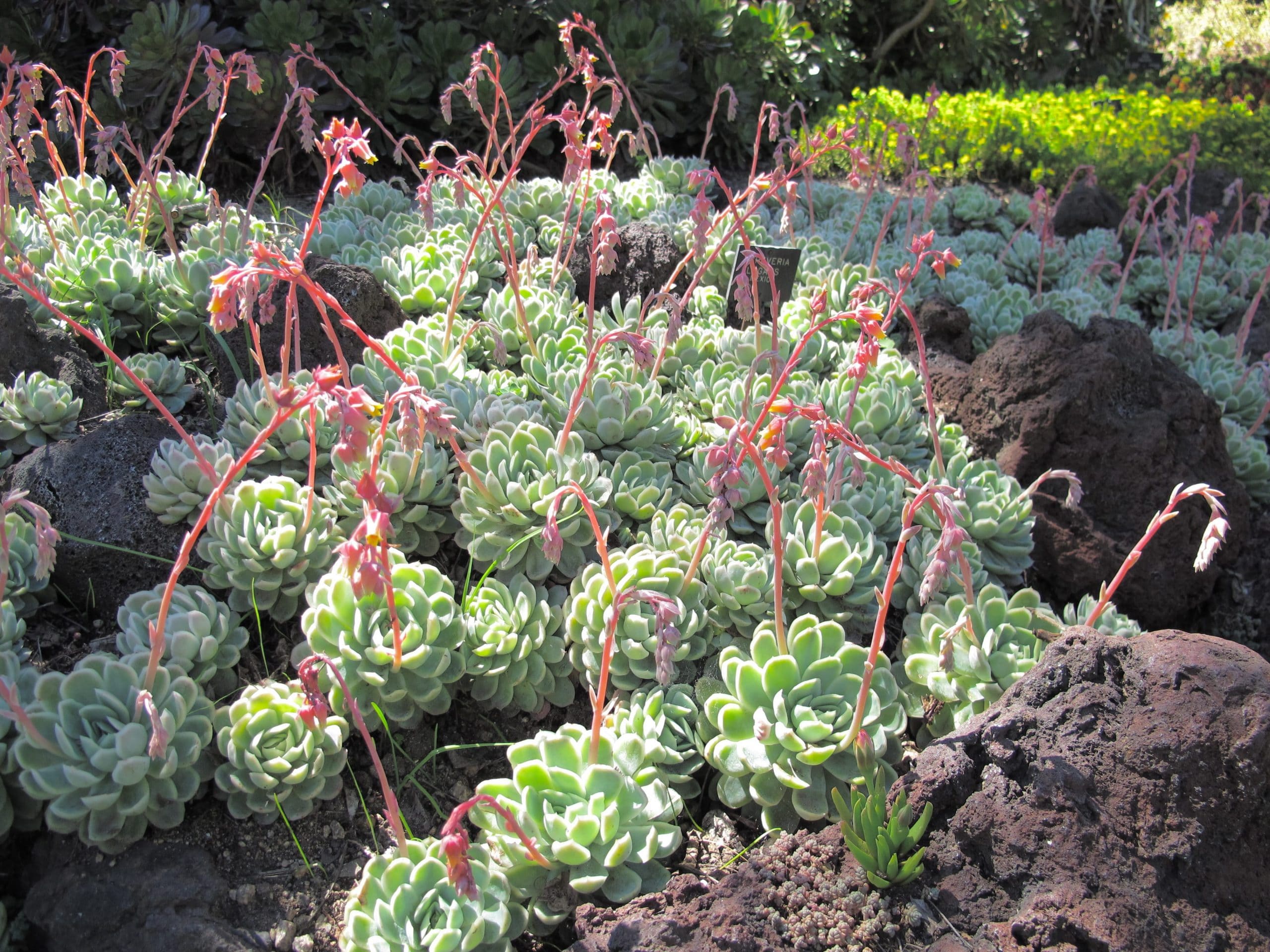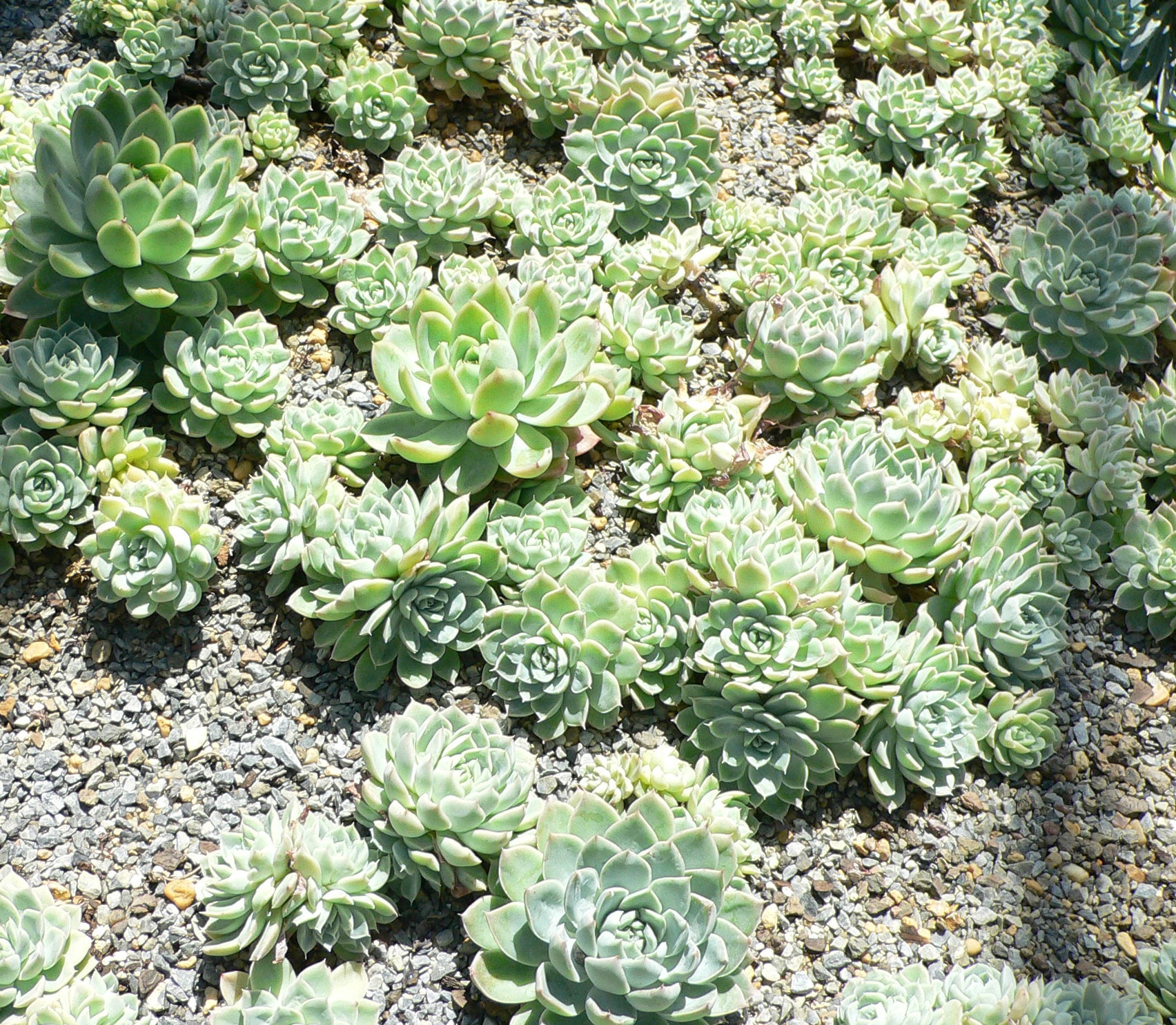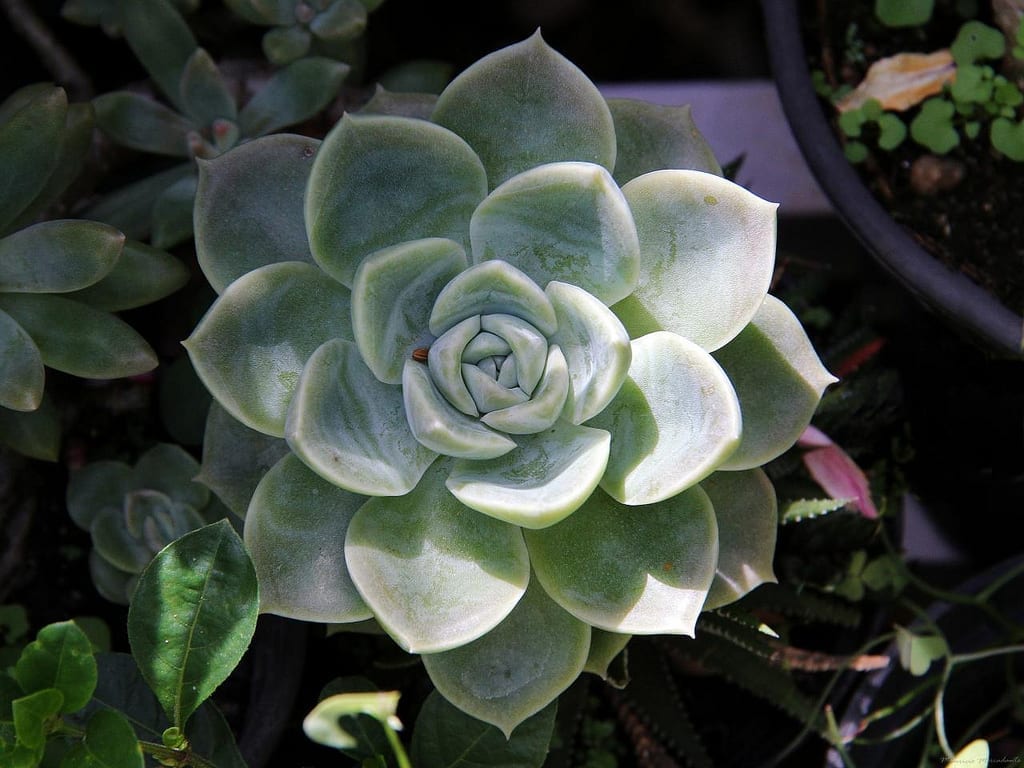
Image - Wikimedia / Krzysztof Golik
Within the group of succulent plants we find a genus that could easily be confused with the most beautiful artificial flowers that we can find in florists, nurseries or garden stores. But our eyes don't have to fool us: These are live plants that are very easy to care for and that also produce their own flowers.
What genre am I talking about? Of the Echeveria. There is a specific species, the echeveria elegans, which is so spectacular that it is known by the name of Alabaster Rose.
What are the characteristics of the Alabaster Rose?

Our protagonist is a succulent plant, or to be more specific, a succulent plant, originally from northwestern Mexico, in Hidalgo. It grows to a height of 10cm, and has a diameter of 7-8cm. It emerges from rosettes composed of more or less oval, fleshy leaves, about 1cm long by 0,5cm wide. It has a very beautiful color, being able to be green or bluish green depending on the variety.
The flowers, which sprout in summer, come out of a terminal stem - that is, after flowering, it dries - that is about 20cm long, usually in groups of 3-5. They are also meaty, so the plant as a whole is wonderful.
How do you take care of yourself?
The Alabaster Rose is a succulent type crass, which does not require much care. However, and from my own experience, I will tell you that although it is relatively easy, if a mistake is made with the irrigation or the fertilizer, the plant will have a bad time. But beware, that does not mean that it is not ideal to start your collection, because it is. In fact, just by choosing a good substrate and a suitable location you will already have a lot of livestock.
Let's know what has to be taken into account so that this wonderful echeveria can be healthy and splendid day after day:
Location

Image - Wikimedia / Mark Pellegrini
It is a plant that requires a lot of light to grow. In its places of origin it is exposed to the king star, and that is where it must also be in a garden or patio. In this way, its growth will be compact, and its leaves will remain in a correct position (the newest upright, and the older ones horizontally).
But be very careful: do not put it directly in the sun if it was previously in shade or semi-shade. Its leaves would burn and the alabaster rose might not get over it. To avoid this, you have to get used to it little by little and gradually, avoiding exposing it to direct sunlight during the central hours of the day.
It is not a plant that can be kept indoors, unless you buy (or already have) a lamp that stimulates plant growth. The reason is that you will not get all the light you need. In general, succulents are not good recommendations to decorate homes, since they need sun to grow in conditions.
Soil or substrate
Regardless of whether you are going to have it in a pot or in the ground, it is important that the soil or substrate has good drainage; that is, it absorbs and filters water quickly. With this in mind, we recommend the following:
- Garden: the earth must be limestone, mixed with perlite, akadama, kyriuzuna or pumice in equal parts so that the roots are in a medium with good aeration.
- Flower pot: it is essential to fill it with some substrate mentioned before (pomx, kiryuzuna, akadama, or some mixture of these).
Irrigation
In summer every 2-3 days, and the rest of the year once every 10 or 15 days. During the winter it is better not to water or to do it very, very little, once a month. If you have it in a pot, do not put a plate under it or its roots could rot from standing water.
When watering, you must wet the soil or substrate, never the plant. Likewise, it is preferable to water in the late afternoon than in the morning, especially in summer, since this will give you more time to absorb and use the water.
Subscriber

From the beginning of spring to the end of summer It must be paid with mineral fertilizers, such as Nitrofoska, or with a fertilizer for cacti and succulents. The dose and frequency of application will be indicated on the product packaging.
Transplant
In spring, whenever the roots come out of the drainage holes or when the entire pot has been filled. Anyway, what can be done is also to remove some suckers, keeping it in the same pot for years and years.
Multiplication
The alabaster rose is multiplied by leaf cuttings and separation of suckers in spring or summer:
Leaf cuttings
If you choose to obtain new copies from leaves, you should take some of the ones that are neither very new nor very old, and lay them down a little on a tray with coconut fiber or vermiculite for example. Cover the base of the leaf (the part that was attached to the rest of the mother plant) with this substrate, and spray or spray with water.
Now, put the tray outside, in an area with light but not direct. Keeping the substrate moist, it will emit its own roots in a few days.
Young
The suckers are exact replicas of the mother plant, and they can be separated very easily when they are about 3-4 centimeters in size, sometimes less. Do this with scissors, and then remove some old leaves (the ones below). Then you must plant them in pots with a substrate such as pumice, and water.
Plagues and diseases
It is quite sturdy, but its flower buds can be attacked by aphids and its leaves by mealybugs if the weather is hot and dry. In addition, it is necessary to protect it from snails during the rains, since otherwise you could be left without a plant (literally).
The first two pests are fought with diatomaceous earth, but for the last it is better to fill a container with beer or use other remedies such as the ones we tell you about. here.
If we talk about diseases, it usually does not have unless the humidity is very high or it is watered excessively. In these cases the fungi would rot their roots and leaves. The only way to control it is, first, by watering only what is necessary and using a substrate that drains the water well, and finally, if there are already symptoms of disease, remove the plant from where it is and change the substrate, leaving it without watering for a period of time. week. Likewise, it will have to be treated with a fungicide.
Rusticity
The alabaster rose withstands frosts of up to -3ºC, but it is convenient to protect it from frost and especially from snow since ice damages its leaves.

Image - Wikimedia / Diego Delso
Have you heard of this plant?
You did not put what it feeds on
Hey.
You can fertilize it with any fertilizer for cacti and succulents, from spring to summer, following the instructions specified on the package.
A greeting.
I have one but with a very long stem that has been growing and the leaves have been falling silent, what should I do?
Hi Marga.
Where do you have it? I ask you because this plant, if it is indoors or in semi-shade, will tend to grow a lot looking for light. Therefore, it has to be in an illuminated area, with natural light. And little by little you have to get used to being in the sun.
Greetings.